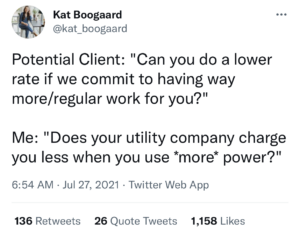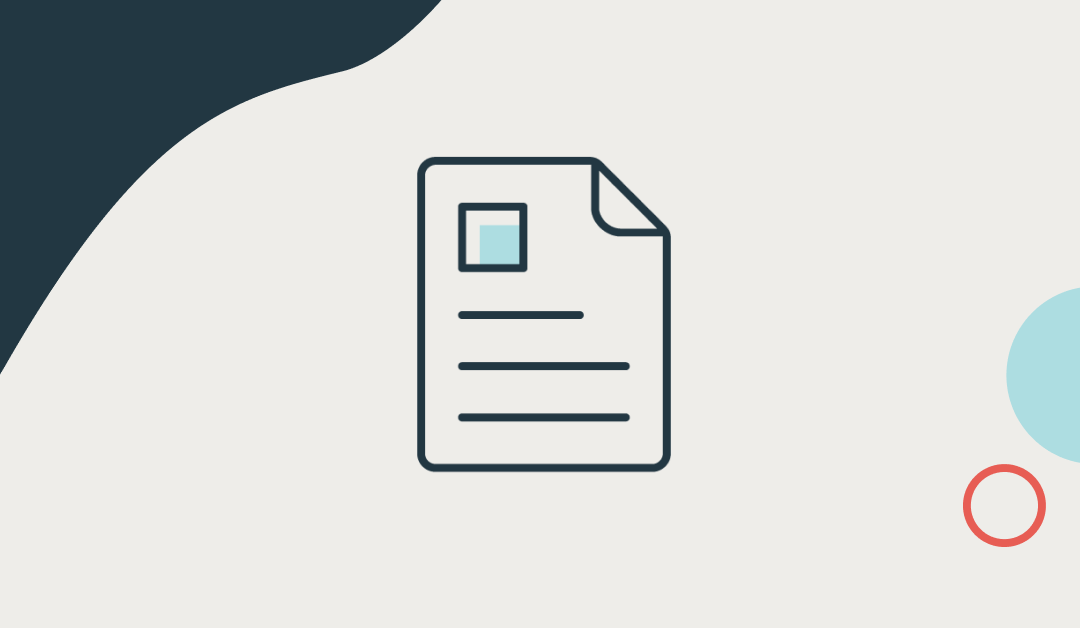Mental Health and Wellness Apps
Calm
Calm is our go-to app for soothing meditations to end the day. In addition to a great library full of meditations organized by theme, they also have Sleep Stories, which are narrated by celebrities and other folks with straight-up snooze-inducing voices. That would usually be an insult but, in this case, it’s a huge compliment.
Headspace
If you’re looking for help committing to daily meditations, Headspace might be the app for you. It has a guided program to help you deepen your practice. The app also offers a wide range of meditations with varying lengths. If you just have a few minutes between client calls, you can easily sneak in a 3-minute meditation. We also love the interface—it’s clean and clear, just like you want your brain to feel after a focused session.
CHANI
Into astrology? Honestly, even if you’re not, the CHANI app is worth a trial run. It distills your birth chart into consumable language, shares beautiful, customized horoscopes, and sends cute push notifications alerting you of the current energies. A productive way to take a break and get to know and understand yourself better.

Communication Apps
Slack
Most of us know this one, right? Slack is a leader in team communication. It revolutionized this industry years back, and has continued to expand its functionality and integrations. If you need a great app to connect with co-creators, coworkers, clients, or whoever else, give it a try. You can create a workspace for free and customize it to make it your own.
Twist
Need help focusing? Yeah, us too. Twist is a great choice for distraction-free communication. Its biggest selling point is that it consolidates your communication apps, so you don’t have to hop around between your email inbox and your chat apps and get lost Googling photos of cheetahs and their emotional support dogs in between. (But actually, go look that up.)
Voxer
Voice notes are great when you want to find that happy medium between texting and calling. If you’re looking for a secure option for real-time voice communication, Voxer is the app for you. Like a Walkie Talkie for teams, it allows you to listen to messages as people speak or save them for later. Plus, it’s compatible with iPhone, Android, and the web for platform-agnostic comms.
Grammarly
If you’re a freelancer, chances are you don’t have a copyeditor on standby to point out when your em dash is misplaced. Luckily, you do have Grammarly. This free online tool points out spelling and grammar errors and offers suggestions to improve your writing, like simplifying your language or shortening your sentences. It’s saved us from many embarrassing moments.
Hemingway Editor
Similar to Grammarly, the aptly named Hemingway App helps you up your writing game, color-coding misspellings, hard-to-read sections, weakening phrases, and more. It also gives your writing a readability score and an associated grade level. We like its simplicity and pretty colors.
Mixmax
Need help finding your email flow? With scheduling, tracking, and automation features, Mixmax is the crowned queen of email management. It helps you increase productivity by cutting down on keystrokes and manual tasks. You can even embed polls, surveys, and booking tools into your emails to spiff them out.

Accounting & Bookkeeping
Bench
Managing finances can be overwhelming for any small business owner, but especially so for freelancers. Luckily, we have Bench—the answer to our expense anxiety. Bench is an all-in-one bookkeeping service to help you stay on top of your finances. You even get access to a dedicated bookkeeper who can answer your trickiest questions.
Truebill
If you’re as subscription-happy as we are, you might find yourself scouring your business credit card statement confused about where that $3.99 recurring charge came from. Truebill adds transparency to your spending, tracking credit card charges, flagging new subscriptions, and alerting you of upcoming charges so you can keep on top of what you’re paying for. Managing dollars going out of your business is important!

Learning & Education
Coursera
Want to brush up your design skills? Or learn more about customer marketing? Coursera offers skill-building courses from over 200 top universities around the world. You can even earn a certificate or a degree online with this powerful learning system. So when you’re ready to expand your service offerings or build a new skillset, scope their wide array of classes.
Udemy
Like Coursera, Udemy offers tons of engaging courses designed to enhance your skill set. The courses are led by experts in their respective fields, and there are over 155,000 to choose from, so you will literally never run out of options for new paths to explore.

Creative & Social Media
Canva
We love Canva. It makes designing visual content easy and fun. Whether you’re creating a social media post or a pitch presentation, its intuitive interface and powerful features will help you make something truly stunning. Our favorite part: They have a library of amazing templates to choose from, so you never have to start from scratch. Oh, and they have a free version!
InVision
The name says it all. InVision helps you turn your imagination into reality. Its powerful product design platform is built for creators of all kinds. You can create a wireframe for your client’s website, product mockups for your next Rad Idea™, brand moodboards to visualize a vibe, and so much more.

Note-Taking
Notion
We tried to resist the craze but it’s time to admit: We’re in love with Notion. Calling it a note-taking app is reductive. It’s, like, so much more than that. This code-free, drag-and-drop platform allows you to create amazing documents and dashboards to organize your thoughts, plan your projects, and streamline your brain.
Evernote
Evernote is the OG of the digital notebook world. It’s a fantastic companion for busybodies, creatives, and entrepreneurs (did I just say ‘freelancer’ in three words?) who want to capture their notes in one clean place and plan their next moves seamlessly. The app can even clip web pages, scan documents, and sync to your calendar for easy task scheduling.
Bear
Whether you’re a blogger, freelance writer, novelist, or poet, Bear can help you make the most of each burst of inspiration. The writing app is specifically designed for masters of prose, with markup features, focus mode, customizable typography, and more. Find your creative flow with this beautiful app.

Community
Workfrom
Do you miss the social aspect of the office? Or do you just want the perfect cafe with great wifi and free refills for an afternoon of work? Workfrom can help with both. This virtual work community crowdsources the best coworking spots from freelancers just like you. Plus, they have an awesome, thriving Slack community for freelancers to chat, connect, and collaborate.
Holisticism
Holisticism is an amazing hub for the spiritually-minded entrepreneur seeking connection. (Did we just write a personal ad?) This magical community offers free workshops and engaging content, and periodically opens its doors for new members to join the North Node—a sub-community that helps spiritual creatives and entrepreneurs learn and grow together.

Password Management
LassPass
What would we do without LastPass? Answer: Spend an hour a day resetting passwords. This handy password management app stores your passwords, generates secure ones, and allows you to access them across devices. You can even share passwords with your co-creators, family members, or clients to make for easy collaboration.
1Password
Geared toward businesses, 1Password is an enhanced security system for password storage, data protection, credit card protection, and more. It makes remote work easy for teams who share software and logins, and it allows for seamless form fills.

Calendar Management
Calendly
If you’re looking for a great scheduling tool that integrates with your calendar and automates meeting communications, look no further than Calendly. This easy-to-use appointment tool makes setting up client calls simple. Their free plan is awesome for basic scheduling needs.
Google Calendar
This one needs no introduction. Google Calendar has it all. It integrates with just about every calendar-friendly app out there (and, of course, every Google app), allowing you to schedule meetings quickly, customize your reminder settings, and share calendars with people who need to know what you’re up to.

Document Management
Dropbox
Dropbox is the giant of the document management space. It’s great for creators and businesses that have a whole lot of files to organize. It’s compatible with Android and iOS, so you can access your documents on the go from anywhere. And its collaboration features allow you to comment on files easily so you can simplify your workflow.
Google Drive
If you’re already a Google power user, Google Drive might be the answer to your document storage needs. Offering documents, spreadsheets, slides, and forms—and 15 GB of free storage—this system allows you to both create and organize all your files in one place. It’s easy to share and collaborate with other Google users too.

Contracts & Paperwork
LegalZoom
Advice is a few clicks away with LegalZoom, the go-to app for people seeking legal help for their businesses. They work with a network of independent attorneys and match you with someone who can meet your specific needs. Whether you’re forming your business, drafting an agreement, or facing a legal challenge, they’re here for you.
Termly
Need help creating your privacy policy or adhering to compliance laws? Termly is an all-in-one solution for freelancers who want to stay above board but don’t know where to start when it comes to drafting legally binding language. Their interface makes it easy—you just plug in your info and generate a custom policy that you can copy/paste or embed onto your website.

Payments
PayPal
PayPal makes paying and receiving money simple and secure. It integrates with many other platforms and services, so you can easily accept payments from clients.
Stripe
The go-to for online businesses, Stripe is a low-cost payment processing platform that allows you to accept payments and send payouts. Their business management system also makes it easy to track your sales and income, generate reports, and get a full picture into your business’s finances.

AI Tools
ChatGPT
This next-level AI content tool is perfect for creating long-form and short-form content. Use ChatGPT for all your content needs, get answers to questions, develop plans, and get inspired with detailed responses.
SEO.ai
Working in 50+ languages, SEO.ai is the number one AI writer for SEO. From SEO-optimized content to identifying relevant keywords, this tool helps make those time-consuming SEO tasks a breeze by creating high-quality SEO content in a fraction of the time.
Durable.co
Building websites is a time-consuming task, to say the least. That’s where Durable comes in. This AI website builder generates robust websites with copy, images, and more in seconds. If you’re a freelancer who’s just kicking off your freelance journey, Durable is a great way to get your business website up and running.
Aioseo.ai
This all-in-one WordPress SEO plugin effortlessly improves your website search rankings. Did we mention it seamlessly integrates with your favorite social platforms like Facebook, Twitter, and Pinterest? This SEO tool also effortlessly connects with your Google Search Console. Get more website traffic and identify new areas of opportunity with Aioseo.
Stockimg.ai
Stockimg.ai creates AI-generated images for logos, posters, book covers, and more in seconds. If you’re a small business owner in need of a new logo or a content writer in need of stock images for a client’s blog, this tool has got you covered.

Business Management
Harlow
Do you need an all-in-one system to streamline your day-to-day operations and get paid? We’ve got you. Harlow helps freelancers understand their priorities, get a full view into their clients and projects, and get paid for the amazing work they do. And best of all, it can all be done from one clean, centralized hub. Sign up today to give us a test drive.


![]()




Recent Comments